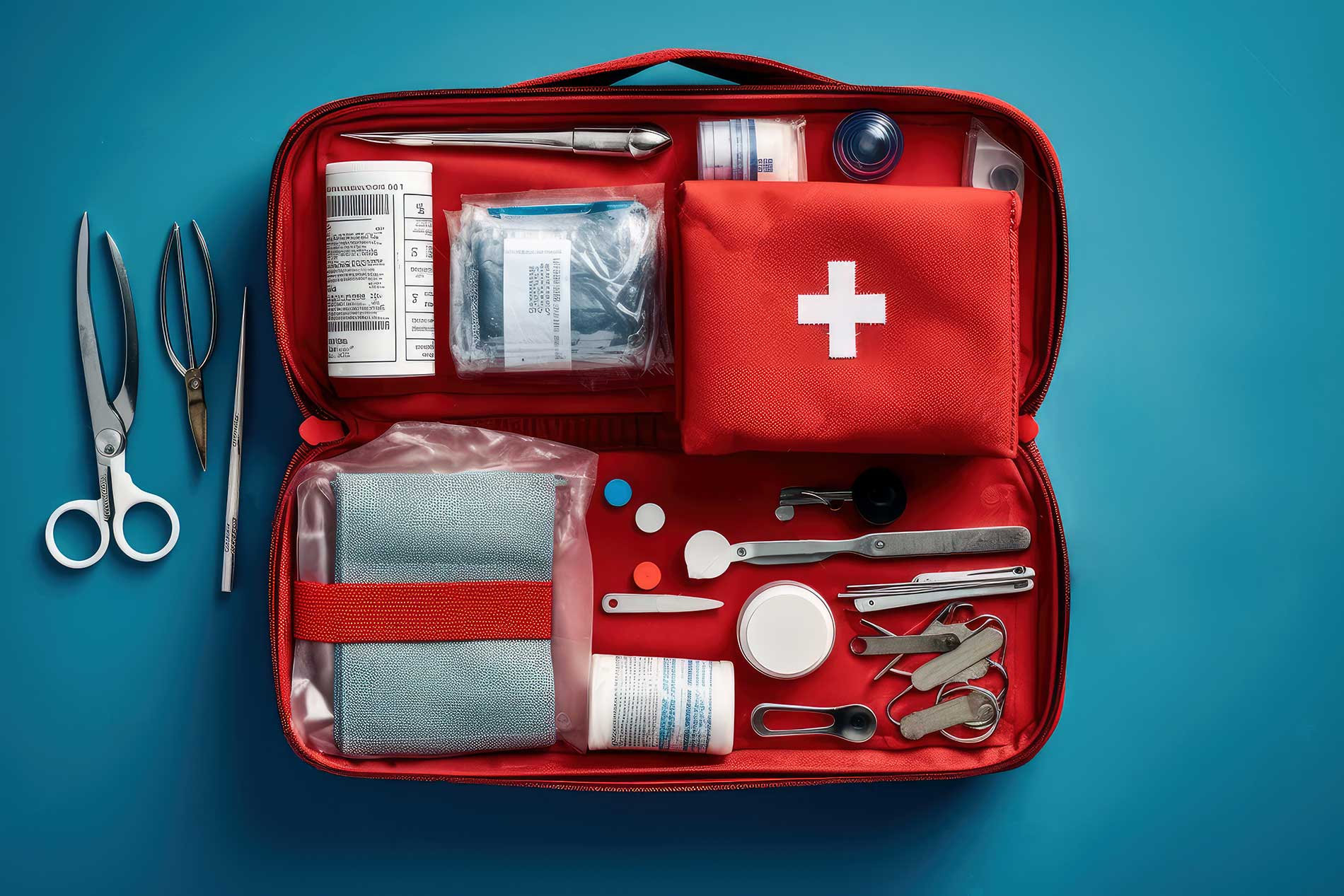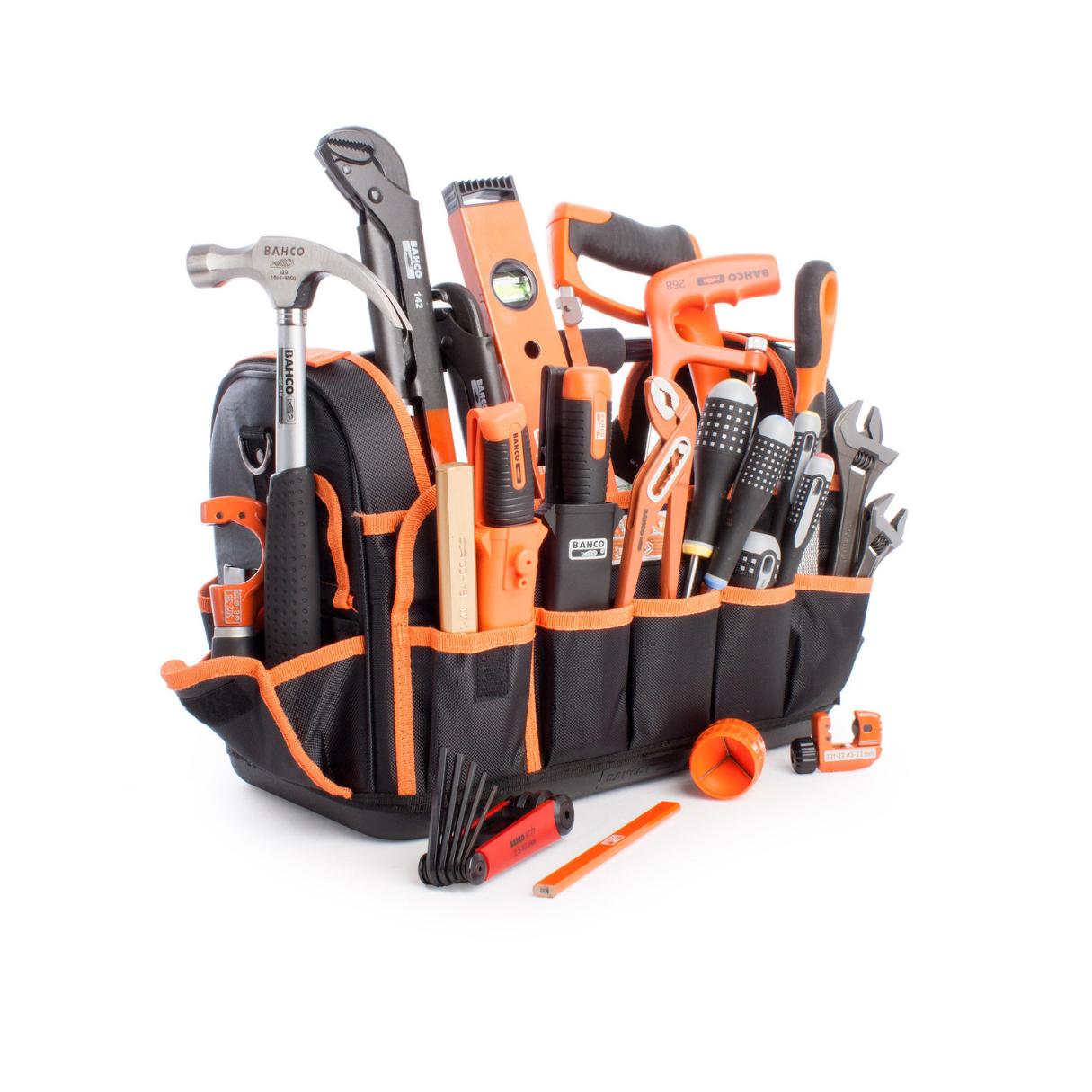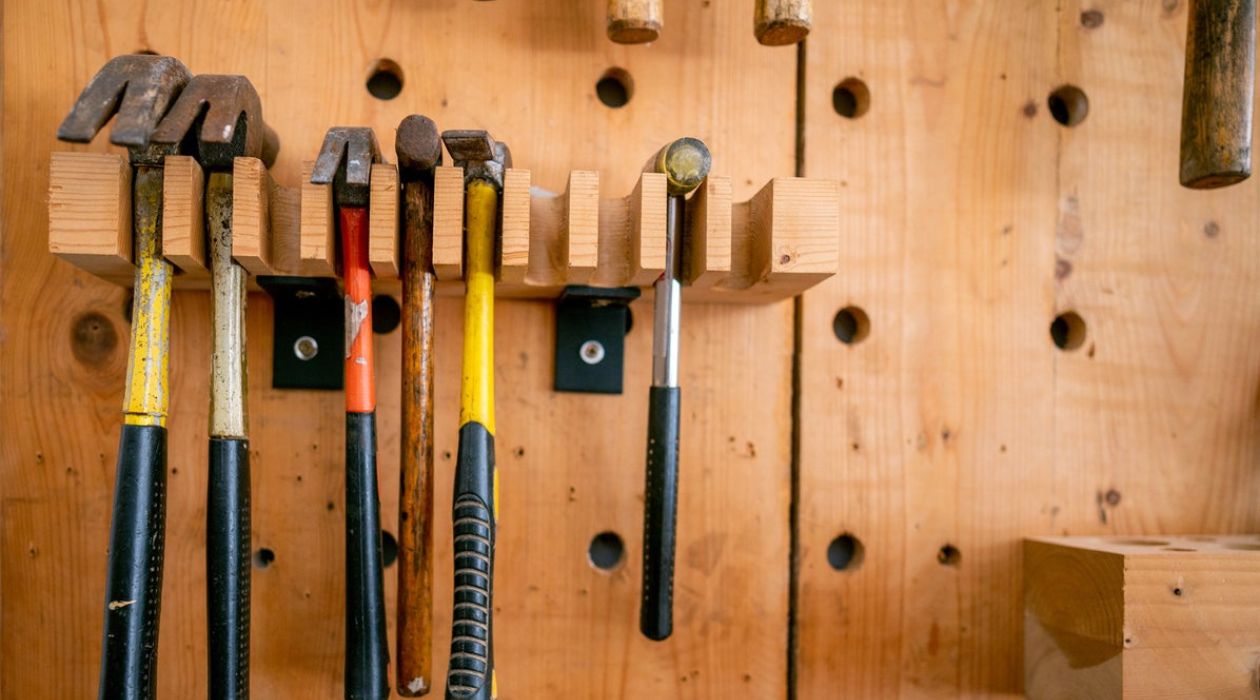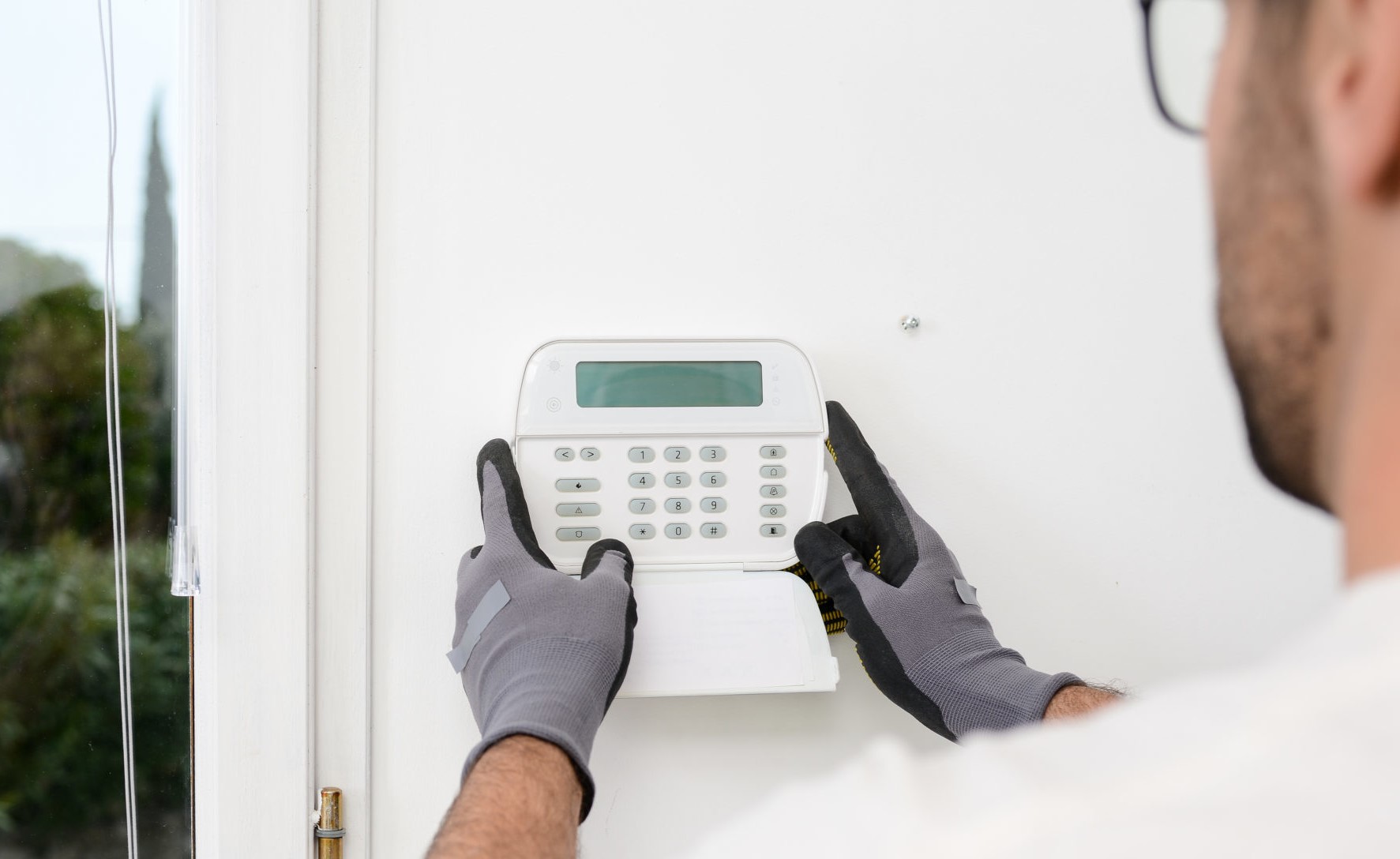Home>Home Maintenance>What To Have In A Home Repair Tool Kit
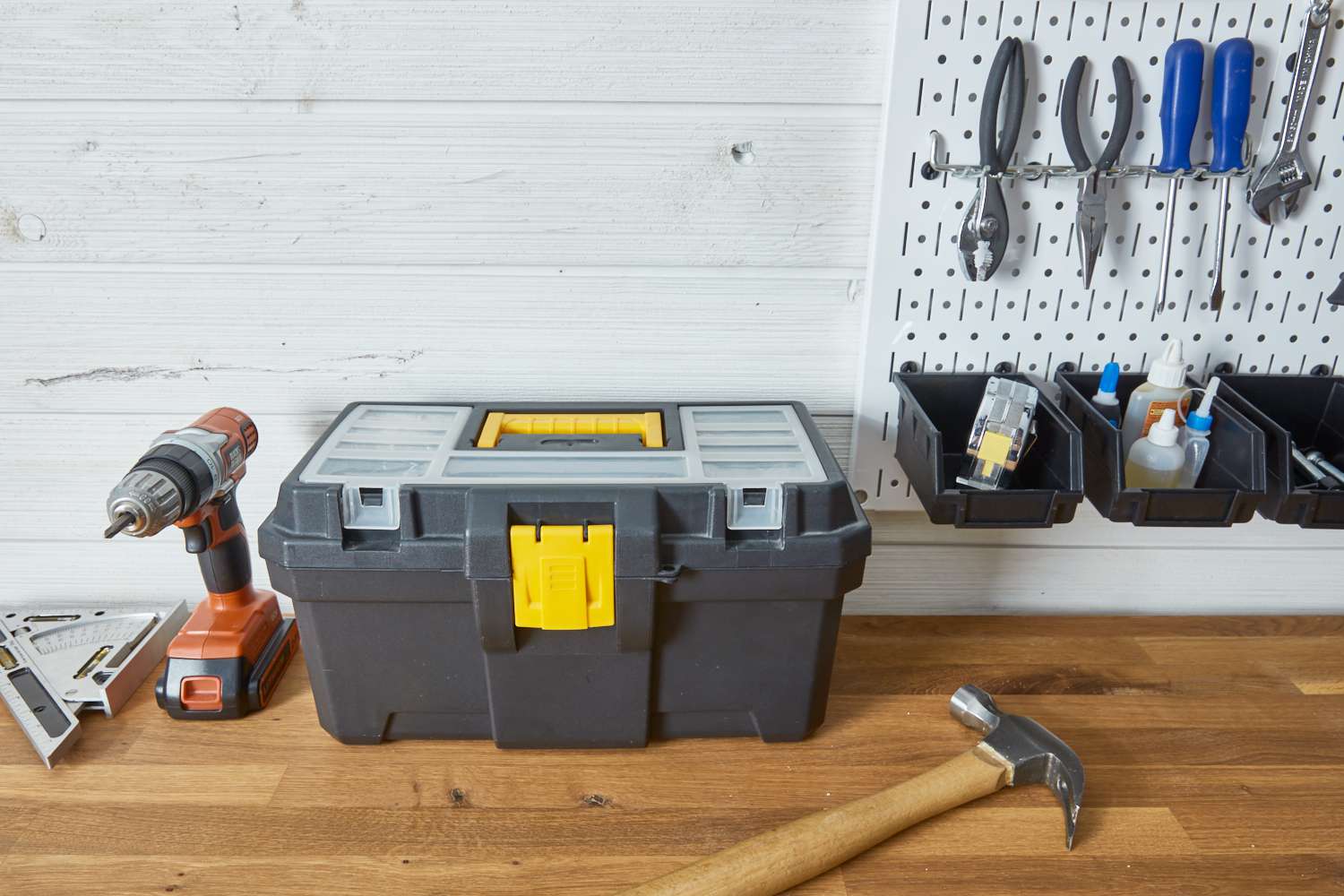

Home Maintenance
What To Have In A Home Repair Tool Kit
Modified: March 6, 2024
Make sure you're prepared for any home maintenance task with a well-stocked tool kit. Discover what essential tools to include in your home repair arsenal.
(Many of the links in this article redirect to a specific reviewed product. Your purchase of these products through affiliate links helps to generate commission for Storables.com, at no extra cost. Learn more)
Introduction
When it comes to home maintenance, having the right tools is essential. Whether you’re a DIY enthusiast or simply want to be prepared for small repairs and improvements around the house, a well-stocked tool kit is a must. But with so many options available, it can be overwhelming to know where to start.
In this article, we will guide you through the must-have tools for your home repair tool kit. From basic hand tools to power tools, measuring and marking tools to fasteners and adhesives, safety equipment to miscellaneous tools, we’ll cover everything you need to tackle a wide range of home projects. So, let’s dive in and discover the essential tools for every homeowner!
Key Takeaways:
- A well-stocked home repair tool kit should include basic hand tools like screwdrivers, hammers, and pliers, as well as power tools such as drills and saws for efficient and versatile home maintenance.
- Accurate measuring and marking tools, along with a variety of fasteners and adhesives, are essential for achieving professional results in home repair and maintenance projects. Safety equipment and miscellaneous tools also play a crucial role in ensuring efficiency and safety.
Read more: What To Have In A First Aid Kit For Camping
Basic Hand Tools
When it comes to home repair and maintenance, having a set of basic hand tools is crucial. These tools are versatile, easy to use, and suitable for a wide range of tasks. Here are some essential hand tools that should be part of every homeowner’s tool kit:
- Screwdriver Set: A set of screwdrivers with both flathead and Phillips head options is essential for fixing loose screws and assembling furniture. Make sure to have different sizes to fit various screw heads.
- Hammer: A hammer is a versatile tool that can be used for driving nails, removing them, and for general tasks requiring a little force. Opt for a sturdy claw hammer with a comfortable grip.
- Pliers: Pliers come in various types and sizes, including slip-joint pliers, needle-nose pliers, and locking pliers. These tools are perfect for gripping and manipulating objects, bending wires, and removing nails.
- Adjustable Wrench: An adjustable wrench allows you to tighten or loosen nuts and bolts of different sizes. Look for a wrench with smooth adjustment and a comfortable handle for ease of use.
- Tape Measure: A tape measure is essential for measuring spaces, determining dimensions, and ensuring accurate cuts and installations. Choose a tape measure with both imperial and metric units for versatility.
- Utility Knife: A sharp utility knife is useful for a variety of tasks, such as opening packages, cutting through materials, and trimming edges. Look for one with a retractable blade and a comfortable grip.
- Level: A level is essential for ensuring that pictures, shelves, and other items are straight and well-balanced. Opt for a torpedo level or a spirit level.
- Cordless Drill: While not strictly a hand tool, a cordless drill is incredibly handy for drilling holes, driving screws, and other tasks requiring power. Invest in a good quality drill with variable speed settings and extra batteries for convenience.
These basic hand tools will come in handy for various home repairs, installations, and DIY projects. They are the foundation of any tool kit and will be your go-to options for countless tasks around the house.
Power Tools
In addition to the basic hand tools, power tools can greatly enhance your capabilities and efficiency when it comes to home repairs and maintenance. These tools are designed to make tasks easier, faster, and more precise. Here are some essential power tools to consider adding to your home repair tool kit:
- Drill: A power drill is a versatile tool that can be used for drilling holes, driving screws, and even sanding with the right attachments. Look for a drill with multiple speed options and a comfortable grip.
- Circular Saw: A circular saw is perfect for making straight cuts in various materials, including wood, plywood, and plastic. Consider a saw with adjustable cutting depth and a safety guard.
- Jigsaw: A jigsaw is ideal for making curved cuts and intricate patterns in different materials. Look for a model with adjustable speed and orbital action for more control.
- Reciprocating Saw: Also known as a “sawzall,” a reciprocating saw is excellent for cutting through materials like wood, metal, and plastic. It’s perfect for demolition work and cutting out openings.
- Rotary Tool: A rotary tool is a versatile handheld device that can be used for sanding, cutting, engraving, and polishing. It comes with various attachments to tackle a wide range of tasks.
- Air Compressor and Nail Gun: An air compressor paired with a nail gun can make quick work of nailing tasks, such as securing trim, installing baseboards, and framing. It saves time and effort compared to using a hammer and nails.
- Angle Grinder: An angle grinder is a powerful tool that can be used for cutting, grinding, and polishing metal, tile, and concrete. It’s a versatile tool for various applications and can be equipped with different discs for different purposes.
Power tools can significantly speed up your tasks and provide more precision compared to manual tools. They are particularly useful for larger projects or when working with harder materials. Remember to read and follow the manufacturer’s instructions and wear appropriate safety gear when using power tools.
Measuring and Marking Tools
Accurate measurements and markings are essential for ensuring precise cuts, installations, and overall quality in home repairs and maintenance. Having the right measuring and marking tools in your tool kit will help you achieve professional results. Here are some essential tools to consider:
- Tape Measure: A tape measure is a must-have tool for measuring distances and dimensions. Look for a durable tape measure with clear markings and a lock feature to keep measurements in place.
- Measuring Square: A measuring square, also known as a carpenter’s square or speed square, is a versatile tool for marking and measuring angles, making straight cuts, and checking for squareness.
- Level: A level is not only useful for ensuring that pictures and shelves are straight but also for checking the horizontal and vertical alignment of surfaces during installations and repairs.
- Combination Square: A combination square combines a ruler, protractor, and square for accurate measurements and marking of angles and straight lines.
- Chalk Line: A chalk line is great for marking long straight lines on surfaces like walls and floors. It consists of a string coated with chalk dust that can be snapped to leave a visible line.
- Marking Gauge: A marking gauge is used to create parallel lines or transfer dimensions onto a workpiece. It consists of a beam and sliding fence with a marking point.
- Calipers: Calipers are helpful for measuring and transferring precise dimensions, especially for fine woodworking or intricate tasks. Digital calipers provide precise readings in both metric and imperial units.
- Stud Finder: A stud finder is essential for locating wall studs when hanging heavy shelves or artwork. Look for one with deep scanning capabilities and edge detection for accurate results.
These measuring and marking tools will help you achieve accuracy and precision in your home repair and maintenance projects. Remember to take measurements multiple times and double-check before making any cuts or installations. Accurate markings will save you time, effort, and potential mistakes in the long run.
Always include a hammer, screwdriver set, adjustable wrench, pliers, tape measure, level, and utility knife in your home repair tool kit. These basic tools will cover most common household repairs.
Fasteners and Adhesives
When it comes to home repairs and maintenance, having the right fasteners and adhesives is essential for securing materials and ensuring long-lasting results. Here are some common fasteners and adhesives to include in your tool kit:
- Nails: Nails are commonly used for joining and securing materials. Make sure to have a variety of sizes and types, such as common nails, finishing nails, and brad nails, to accommodate different applications.
- Screws: Screws provide a stronger and more secure fastening option compared to nails. Stock up on various sizes and types, including wood screws, machine screws, and drywall screws.
- Bolts and Nuts: Bolts and nuts are ideal for heavy-duty applications or when a stronger connection is required. Have an assortment of sizes and types, such as hex bolts and nuts, for versatility.
- Anchors: Anchors are necessary when securing objects to walls or other surfaces that may not have enough strength to support the weight. Common types include wall anchors, toggle bolts, and concrete anchors.
- Wood Glue: Wood glue is ideal for bonding wood pieces together. It provides a strong, durable, and long-lasting bond. Opt for a waterproof and quick-drying wood glue for added convenience.
- Super Glue: Super glue, or cyanoacrylate adhesive, is a quick and strong adhesive suitable for various materials. It’s perfect for bonding small objects or repairing delicate items.
- Epoxy: Epoxy adhesive is a versatile and durable bonding agent, suitable for a wide range of materials. It’s often used for filling gaps, repairing cracks, and bonding different materials together.
- Construction Adhesive: Construction adhesive is a strong adhesive designed for bonding heavy materials, such as concrete, wood, and metal. It provides superior strength and is great for larger projects.
Having a variety of fasteners and adhesives on hand will ensure that you can tackle a wide range of repair and installation tasks effectively. Always choose the appropriate fastener or adhesive for the specific materials and conditions to ensure a secure and long-lasting bond.
Read more: What Hand Tools Have A Lifetime Warranty
Safety Equipment
When working on home repairs and maintenance, safety should always be a top priority. Equipping yourself with the right safety equipment will help prevent accidents and protect you from potential hazards. Here are some essential safety items to include in your tool kit:
- Safety Glasses/Goggles: Protect your eyes from flying debris, dust, and chemicals with a pair of safety glasses or goggles. Choose ones that provide proper coverage and meet the ANSI standards for impact resistance.
- Ear Protection: When working with loud power tools or in noisy environments, wearing ear protection is crucial to prevent hearing damage. Options include earplugs or earmuffs with sufficient noise reduction ratings (NRR).
- Dust Mask/Respirator: Protect your lungs from harmful particles, dust, and fumes by wearing a dust mask or respirator. Look for masks that provide appropriate filtration levels and a secure fit.
- Work Gloves: Choose a good pair of work gloves that provide protection against cuts, abrasions, and chemicals. Look for gloves that fit well, offer dexterity, and are appropriate for the task at hand.
- Protective Clothing: Depending on the nature of the task, wearing protective clothing, such as coveralls or work aprons, can safeguard against spills, splashes, and stains. Opt for clothing made from durable materials that cover your body adequately.
- Safety Boots/Shoes: Protect your feet from potential hazards, heavy objects, and sharp materials by wearing safety boots or shoes. Look for footwear with reinforced toes and slip-resistant soles.
- First Aid Kit: Always have a well-stocked first aid kit on hand for any minor injuries that may occur during home repairs. Make sure it includes bandages, antiseptic wipes, adhesive tape, and basic medical supplies.
- Fire Extinguisher: In case of a fire-related emergency, having a fire extinguisher readily available is crucial. Ensure it is suitable for use on various types of fires and check its expiration date regularly.
Remember, safety should never be compromised. Always use the appropriate safety equipment for each task and follow safety guidelines and instructions provided with tools and materials. Investing in proper safety gear will provide you with peace of mind as you tackle your home repair projects.
Miscellaneous Tools
In addition to the essential hand tools, power tools, measuring and marking tools, fasteners, and safety equipment, there are some miscellaneous tools that can come in handy for various home repair and maintenance tasks. These tools may not be used as frequently, but having them in your tool kit can save you time and effort in specific situations. Here are a few miscellaneous tools worth considering:
- Utility Knife: Apart from its use as a cutting tool, a utility knife can be handy for a range of tasks, such as scraping off old paint, opening packages, or removing caulk.
- Flashlight: A reliable flashlight is essential for working in dark or dimly lit areas, whether it’s fixing a broken fuse or investigating a leak. Opt for an LED flashlight with a long battery life.
- Caulking Gun: A caulking gun is used to apply caulk or sealant around windows, doors, and other gaps or cracks in your home. Look for a sturdy caulking gun that dispenses caulk smoothly.
- Wire Cutters: Wire cutters are useful for cutting or stripping wires, making electrical connections, and completing various DIY electrical projects.
- Pipe Wrench: A pipe wrench is designed for gripping and turning pipes, fittings, and other round objects. It’s essential for plumbing repairs or installations.
- Hacksaw: A hacksaw is perfect for cutting through metal, plastic, or wood. It’s particularly useful for resizing pipes, cutting through bolts, or trimming small materials.
- Staple Gun: A staple gun is great for securing upholstery, attaching fabric to surfaces, or fastening lightweight materials. Look for a staple gun that is easy to load and has adjustable stapling depth.
- Paint Brushes and Rollers: If you plan on tackling painting projects, having a selection of paint brushes and rollers of different sizes and types will give you the versatility needed to achieve a smooth and professional finish.
These miscellaneous tools can be invaluable for specific tasks and help you be prepared for a range of home repair and maintenance projects. While they may not be used as frequently as other tools, having them readily available in your tool kit will save you from running to the store at an inconvenient time.
Conclusion
Having a well-stocked tool kit is essential for every homeowner. It allows you to tackle a wide range of home repairs and maintenance tasks, saving you time and money in the long run. By investing in the right tools, you’ll be equipped to handle various projects with confidence and efficiency.
In this article, we’ve covered the essential tools for your home repair tool kit. Starting with the basic hand tools, we explored the importance of having a quality set of screwdrivers, a hammer, pliers, an adjustable wrench, and other fundamental tools. These versatile tools are the backbone of any tool kit and can assist in numerous repair and assembly tasks.
We then moved on to power tools, which can greatly enhance your capabilities and efficiency. From drills and saws to sanders and nail guns, power tools make quick work of tasks and allow for more precise results, especially when dealing with larger projects or tougher materials.
Accurate measurements and markings are crucial in home repairs, which is why we discussed the importance of including measuring and marking tools in your kit. Tape measures, levels, squares, and marking gauges ensure that cuts, installations, and alignments are precise and professional.
Fasteners and adhesives are the backbone of secure and long-lasting repairs. Nails, screws, bolts, and different types of adhesives provide the necessary stability and strength for various materials and applications.
Safety should never be overlooked, so we emphasized the importance of having the right safety equipment. Safety glasses, ear protection, dust masks, and work gloves are just a few examples of the tools that will protect you from potential hazards while working on home repairs or maintenance.
Lastly, we discussed some miscellaneous tools that may not be used as frequently but can be extremely handy in specific situations. Items like utility knives, flashlights, and caulking guns can save you time and effort when dealing with specific tasks or unexpected situations.
By assembling a comprehensive tool kit with these essential tools, you’ll be well-prepared for a wide range of home repairs and maintenance projects. Regularly maintaining and upgrading your tool kit will ensure you have the right tools at your disposal whenever you need them.
Remember, safety is paramount, so always follow proper safety guidelines and use the appropriate tools for each task. With the right tools and a little knowledge, you’ll be able to tackle various home repairs and improvements confidently and efficiently.
Frequently Asked Questions about What To Have In A Home Repair Tool Kit
Was this page helpful?
At Storables.com, we guarantee accurate and reliable information. Our content, validated by Expert Board Contributors, is crafted following stringent Editorial Policies. We're committed to providing you with well-researched, expert-backed insights for all your informational needs.

